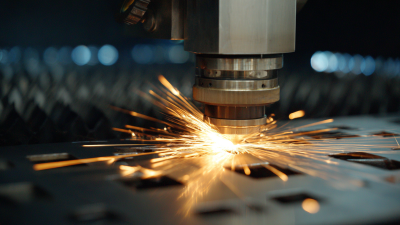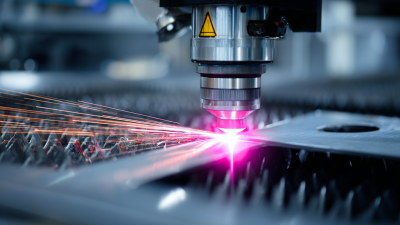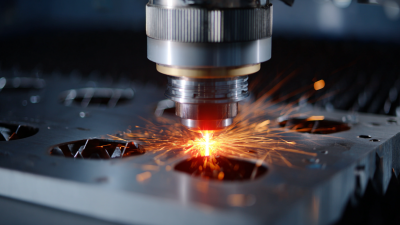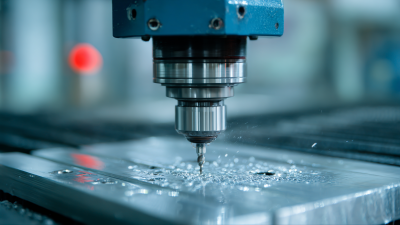Unlocking Creativity with Custom Laser Cutting Techniques for Unique Designs
In the realm of design and manufacturing, "custom laser cutting" has emerged as a transformative technique that significantly enhances creative possibilities. According to a recent report by IBISWorld, the laser cutting industry has experienced an annual growth rate of 4.3% over the past five years, driven by an increasing demand for personalized products across various sectors including fashion, architecture, and home decor. This advanced technology allows designers to achieve intricate patterns and unique shapes with unprecedented precision, reducing material waste while fostering innovation. As businesses increasingly seek to differentiate themselves in a competitive market, harnessing the power of custom laser cutting not only unlocks new design potentials but also aligns with the growing consumer preference for bespoke items. This guide explores how to effectively integrate custom laser cutting techniques into your design process, empowering you to create truly one-of-a-kind pieces that captivate and inspire.

Exploring the Intersection of Technology and Art in Laser Cutting
The synergy between technology and art has reached a new pinnacle with the advent of custom laser cutting techniques. This innovation is revolutionizing the design landscape, allowing artists and creators to transform ordinary materials into intricate pieces of art. According to a report by the Custom Laser Processing Association, the global market for laser cutting is expected to grow at a compound annual growth rate (CAGR) of 5.1%, reaching $5.8 billion by 2026. This growth indicates not only a surge in commercial applications but also a burgeoning interest in artistic undertakings where precision and personalization meet.
Laser cutting technology enables designers to execute highly detailed and precise cuts on a plethora of materials, including wood, acrylic, and metal. The use of computer-controlled systems allows for design flexibility that was previously unattainable through traditional methods. A survey by the International Society of Laser Cutting Professionals found that 82% of artists using laser cutting reported an enhanced ability to express their creativity. This technology not only democratizes the production of unique designs but also inspires a new generation of artists to push boundaries and explore uncharted creative territories. As artists continue to harness these advanced techniques, the intersection of technology and art promises a vibrant future for innovative design.
Innovative Applications of Custom Laser Cutting in Design Industries
In recent years, custom laser cutting techniques have significantly transformed design industries, offering innovative applications that cater to the ever-evolving preferences of consumers. According to research, the automatic laser tube cutting machine market is projected to grow from a value of $865.53 million in 2024 to approximately $1.828 billion by 2032. This growth highlights a burgeoning interest and demand for precision cutting solutions that enable designers to explore unique forms and functionalities in their projects.
Notably, the CO2 laser cutting machine market is also experiencing a significant uptrend, covering a broad spectrum of industries, including automotive, aerospace, and home appliances. The escalating applications of 2D and 3D laser cutting technologies underscore their versatility in creating tailor-made designs. As industries embrace digital transformation, the integration of Internet of Things (IoT) and artificial intelligence with laser cutting technology is unlocking new opportunities. This intersection is not only enhancing design precision but also streamlining workflows, leading to enhanced efficiency and productivity across various sectors.
Unlocking Creativity with Custom Laser Cutting Techniques for Unique Designs - Innovative Applications of Custom Laser Cutting in Design Industries
| Industry | Application | Material Used | Unique Feature |
|---|---|---|---|
| Architecture | Customized Facades | Corten Steel | Weathering Effects |
| Fashion | Embossed Textiles | Leather | Intricate Patterns |
| Furniture | Custom Inlays | Plywood | Geometric Designs |
| Jewelry | Personalized Cutouts | Acrylic | Lightweight and Colorful |
| Interior Design | Wall Art | Wood | Natural Grain Patterns |
Transforming Ideas into Reality: The Process of Custom Laser Cutting
 Custom laser cutting opens a world of possibilities for transforming ideas into tangible reality. This innovative technique utilizes high-powered lasers to cut through various materials with precision and intricacy. Designers and creators can bring their concepts to life, whether it be in the realm of fashion, architecture, or home decor. By using laser cutting, intricate patterns and detailed shapes that were once challenging to achieve can now be easily rendered, allowing for an unparalleled level of creativity.
Custom laser cutting opens a world of possibilities for transforming ideas into tangible reality. This innovative technique utilizes high-powered lasers to cut through various materials with precision and intricacy. Designers and creators can bring their concepts to life, whether it be in the realm of fashion, architecture, or home decor. By using laser cutting, intricate patterns and detailed shapes that were once challenging to achieve can now be easily rendered, allowing for an unparalleled level of creativity.
The process begins with a digital design, which is then translated into machine language for the laser cutter. This step is crucial as it ensures that every detail of the design is captured and executed flawlessly. Material selection further enhances the uniqueness of each project; whether wood, acrylic, or metal, the selected material can dramatically alter the final product's aesthetics and functionality. Once the laser cutter gets to work, it precisely etches, engraves, or cuts, resulting in a meticulous finish that reflects the creator's vision. By leveraging custom laser cutting techniques, anyone can unlock their creative potential and turn imaginative ideas into stunning realities.
Maximizing Creativity: Techniques for Unique Laser-Cut Designs
Laser cutting technology has revolutionized the design landscape, offering limitless possibilities for creativity. By utilizing custom laser cutting techniques, designers can bring their unique ideas to life with precision and detail. This method not only allows for intricate designs but also provides the flexibility to experiment with various materials. Whether you are working with wood, metal, or acrylic, each medium offers distinctive characteristics that can enhance your project's aesthetic appeal.
**Tips:** When exploring laser-cutting techniques, experiment with different thicknesses and shapes. Layering materials can create depth and texture, adding richness to your design. Additionally, consider incorporating negative space into your cuts; this not only showcases the complexity of your design but also allows light to play through, enhancing visual intrigue. Lastly, always prototype your designs on less expensive materials before finalizing with your chosen medium to ensure the best outcome.
As you embark on your creative journey, remember that the power of laser cutting lies in its ability to transform the ordinary into the extraordinary. Customization is key—don’t hesitate to modify traditional designs to express your unique vision. This technique encourages thinking outside the box, enabling you to create one-of-a-kind pieces that truly stand out.
Unlocking Creativity with Custom Laser Cutting Techniques
Future Trends in Laser Cutting Technology and Design Customization
The future of laser cutting technology holds exciting possibilities for design customization, enabling artists and manufacturers to explore unprecedented creativity. As advancements in laser precision and speed continue to evolve, the integration of artificial intelligence and machine learning will allow for more intricate and personalized designs. These cutting-edge technologies promise to streamline the design process, reducing production times while increasing the complexity of patterns and shapes that can be achieved. This evolution also empowers creators to produce limited runs of bespoke items tailored to individual customer preferences, thereby enhancing the aesthetic value and emotional connection of products.

Additionally, the democratization of laser cutting technology is fostering a new wave of innovation in various industries. Accessible hardware and user-friendly software are allowing small businesses and hobbyists to enter the market, generating a diverse range of unique designs. This trend is not only expanding the applications of laser cutting in fashion, interior design, and product development but also encouraging collaboration among creators from different fields. As technology continues to advance, the intersection of creativity and customization will lead to unique expressions and novel solutions that redefine traditional design methodologies.
Related Posts
-

Unlock Unlimited Possibilities with Custom Laser Cutting for Your Unique Projects
-

The Future of Manufacturing with Metal Laser Cutting Technology Explained
-

Emerging Trends in Stainless Steel Laser Cutting Technologies at the 138th Canton Fair 2025 in China
-

Exploring Laser Machining Innovations at China Import and Export Fair 2025
-

Unlocking the Future of Manufacturing Through Laser Machining Innovations and Trends
-

What is the Advantage of Using a CNC Router for Your Business

